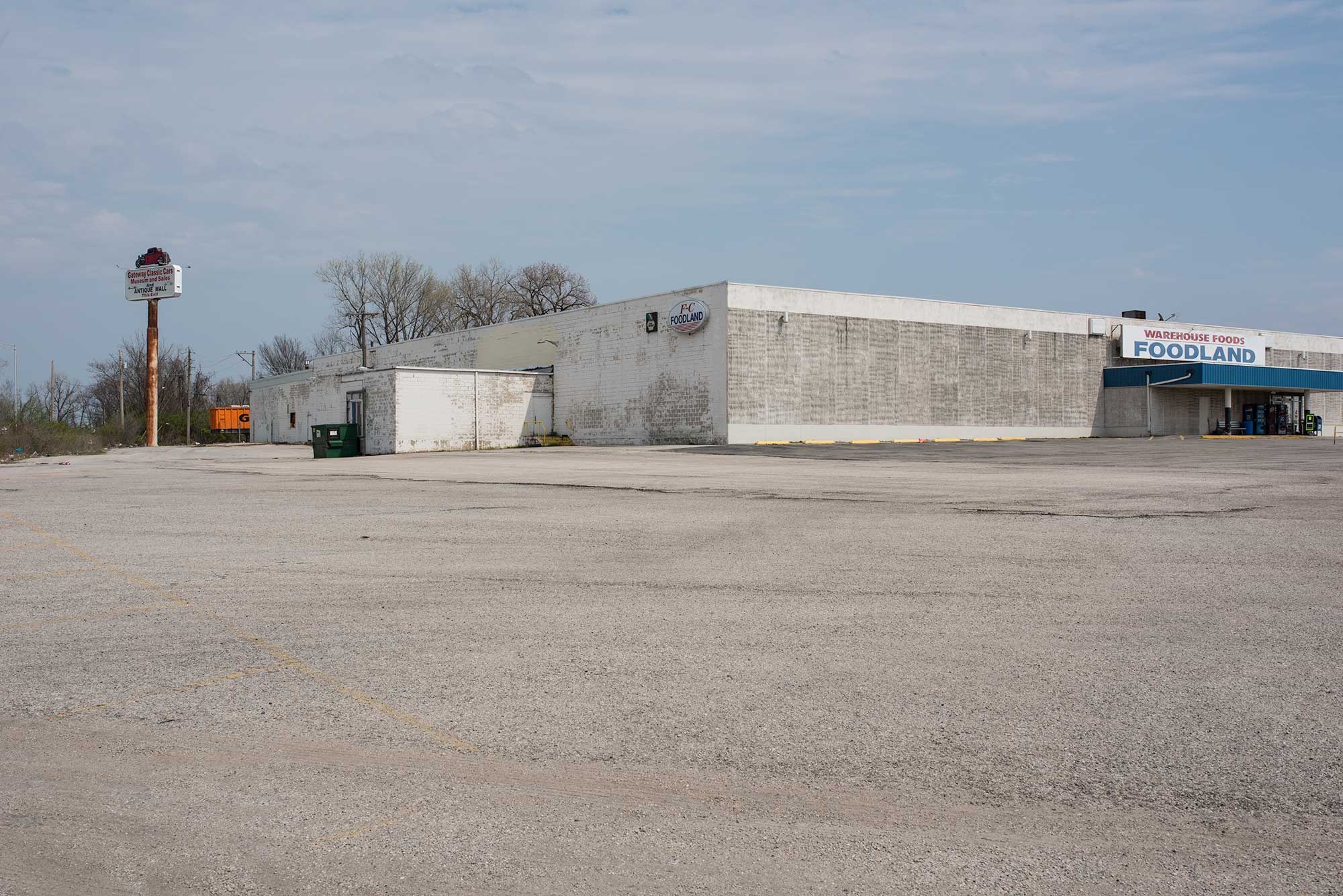

Driving along Collinsville Rd. adjacent to Fairmont City is a distinct topographic transition marking the edge of the former Indian Lake. To the North, one can detect a noticeable drop in grade—with the marshy lowlands of the lakebed still legible between the trees and reeds. Here, along this small ridge formed by the natural levee formed by the ancient river meander, was a string of Indian mounds—Powel, Wilson, and Sam Chucallo Mounds—that were part of the larger Cahokia polity. Extending along an ancient causeway connecting Cahokia with East St. Louis that followed this ridge, these mounds have been for the most part destroyed; lying, as they were, on the outskirts of the more charismatic clustering at what would become Cahokia Mounds State Park. Taking cues from the natural topographic rise of the natural levee, pre-contact Native Americans sited a series of burial and other mounds on land held up out of the flood prone area below. In this, we can detect a fundamental human pattern of site selection. No human, ever, it seems, likes to build in swampy areas. // Powell Mound was of particular interest to early archeologists—as it was the second largest of the Cahokian precinct mounds. Yet the relentless mound-removal of the late 19th and 20th centuries left this large tumuli flattened. In late 1930 and early 1931, surrounded by a group of spectators and an occasional archeologist, a steam shovel dug away at the body of this mound, revealing, then destroying, a large group of elite burial sites. The Powell family reportedly had a standing offer of $3000 for any group that wanted to save the mound for preservation and exploration, but when no group stepped forward, and following rumors of the impending use of eminent domain, the family moved ahead with clearing the mound for agricultural purposes and to fill in low spots elsewhere on their farm. Work dismantling the mound started on the north side of the mound, with the steam shovel out of view from the highway and hidden by the massive mound, and proceeded for over a week before the public was aware that demolition had begun. Today, the site is marked, we might say, by the itinerant businesses that inhabit the large strip mall of the former Gem International Inc. store and parking lot at the Northeast corner of Collinsville Rd., Kingshighway, and State Route 111.